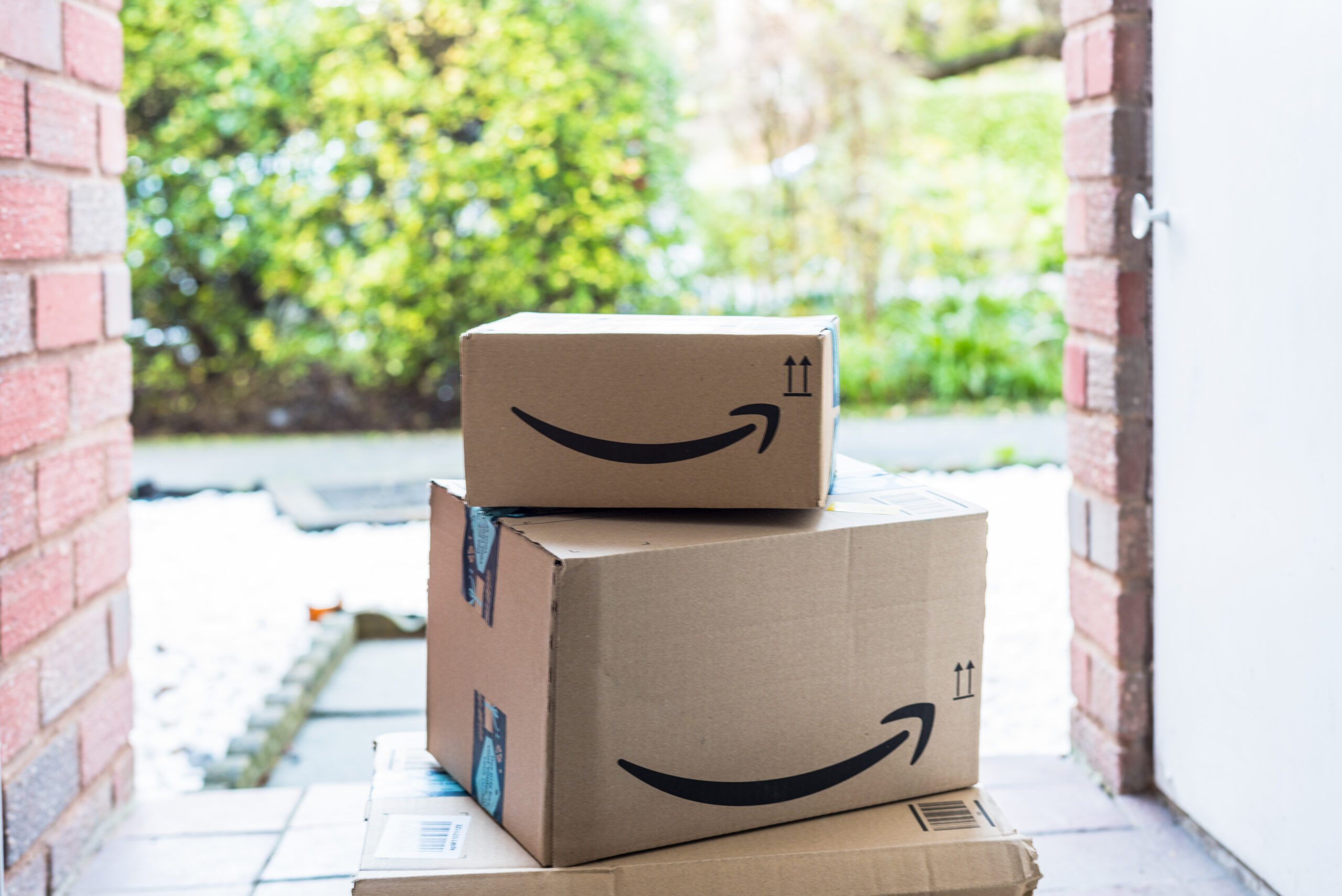
How to Drive External Traffic to Your Amazon Store Listings
How to Drive External Traffic to Your Amazon Store Listings
Greg Walthour, CO-CEO • Intero Digital • October 5, 2023
Amazon’s dominance in the e-commerce landscape is unquestionable. With the platform attracting billions of visits monthly and most consumers admitting to being more likely to buy from Amazon than other sites, ranking high in Amazon’s search results is vital.
Yet many Amazon sellers wonder exactly how to improve Amazon search rankings or how to drive external traffic to Amazon listings. To find the answers, sellers must have a deep understanding of the intricate dynamics at play. This includes effectively attracting both internal and external traffic, a crucial component in the world of e-commerce. After all, selling on Amazon isn’t just about what happens within Amazon; it’s a multi-channel strategy.
Understanding External vs. Internal Traffic
In the world of Amazon selling, there are two primary avenues for potential customers to discover your products: external traffic and internal traffic. Each type has its distinct features, advantages, and challenges. Let’s explore these methods in depth.
External Traffic:
- Definition: External traffic encompasses visitors who arrive at your Amazon product listings from sources beyond Amazon’s ecosystem. These visitors are directed to your listings through various external marketing efforts, such as social-media campaigns, influencer endorsements, email marketing, content marketing, and external advertisements.
- Importance: Capturing external traffic is a crucial strategy for expanding your audience beyond Amazon’s established customer base. By tapping into existing audiences on other platforms, you can channel them toward your Amazon listings. This approach not only widens your reach but also contributes to building brand recognition and customer loyalty. Over time, this can lead to a rise in organic traffic and a loyal customer base on Amazon.
- Benefits: Successfully driving external traffic to your Amazon listings can yield a positive impact on your organic search rankings within Amazon’s platform. When external visitors make purchases on Amazon, it sends a positive signal to Amazon’s algorithm, indicating that your product is desirable and relevant. This, in turn, has the potential to enhance your internal traffic and boost your visibility in search results.
- Challenges: Attracting external traffic requires dedicated efforts, coordination, and investment in marketing campaigns beyond Amazon. It’s also worth noting that the conversion rate of external traffic might be lower compared to internal traffic, as external visitors may not be as familiar with Amazon’s interface or might be hesitant to make purchases on a new platform.
Internal Traffic:
- Definition: Internal traffic pertains to visitors who directly access your product listings from within Amazon’s platform. These visitors discover your products through Amazon’s search results, recommended product sections, sponsored advertisements, and other internal features.
- Importance: Internal traffic holds immense significance for Amazon sellers, serving as a metric of how effectively your product listings attract customers within Amazon’s environment. Strong internal traffic, combined with effective conversion rates, can lead to increased sales and improved search result rankings.
- Benefits: Internal traffic exhibits a higher likelihood of conversion compared to external traffic, primarily because visitors are already within the Amazon shopping ecosystem. The successful generation of internal traffic can drive heightened organic visibility and improved rankings in Amazon’s search results, thereby contributing to enhanced sales figures.
- Challenges: Achieving substantial internal traffic demands a solid understanding of Amazon SEO best practices and meticulous optimization of product titles, descriptions, keywords, and images. The competitive landscape on Amazon also requires continuous monitoring and refinement of your listings to maintain competitiveness.
To thrive as an Amazon seller, it’s important to strike a balance between external and internal traffic. External traffic aids in brand-building, amplifying organic rankings, and attracting a diverse audience. On the flip side, internal traffic forms the bedrock of your Amazon sales, directly influencing conversion rates and search-result standings within the platform.
By comprehending the distinctions between external and internal traffic and harnessing both effectively, you can maximize your visibility, draw in a broader customer base, and pave the way for enduring success as a seller on Amazon.
Strategies to Increase Traffic to Amazon Listings
When it comes to increasing traffic to your Amazon listings through external sources, not all approaches are equally effective. To make the most of your efforts and investments, it’s essential to differentiate between strategies that might not yield results and those that can truly elevate your Amazon selling game. Let’s explore some key takeaways that provide solutions for how to drive external traffic to Amazon listings:
1.Avoid social media ads (without targeting).
Generalized ads across social platforms can drain your budget without notable results.
Instead, try targeted social media ads.
Platforms like Facebook and Instagram offer granular targeting. By segmenting based on interests, behaviors, and other demographics, you can ensure your products appear before the most relevant eyes.
2. Avoid influencer marketing (without relevance).
Collaborating with any influencer, regardless of their audience, might not drive your sales.
Instead, try relevant influencer collaborations.
Engage with influencers whose audience aligns with your products. Influencers who genuinely connect with their followers are more likely to drive relevant traffic to your Amazon listings.
3. Avoid email marketing (without segmentation).
Mass emails sound efficient, but without segmenting recipients, they often fall flat.
Instead, try segmented email campaigns: Implement email segmentation to deliver personalized and relevant messages to different customer groups. Personalized emails can lead to higher engagement and click-through rates, directing quality traffic to your Amazon store.
4. Avoid general content marketing.
Crafting content without strategic direction can mean your efforts get lost in the vast digital space.
Instead, try focused content marketing.
Craft an effective content marketing strategy centered around relevant keywords and topics that resonate with your products and target audience. Skillfully optimize your content for search engines and promote it across multiple channels to generate targeted traffic. It’s crucial to get the customer’s attention, as their first impression is usually within 60-90 seconds of visiting a detail page. This is where the importance of including high-quality photos and/or videos comes into play once you get traffic to a listing (either external or internal). With videos, conversion rates are higher as a customer gets to learn more about a product and gets the opportunity to see a product differently. Adding A+ and additional content within the listing gives you the option to stuff more relevant keywords into the detail page along with providing extra relevant content.
5. Avoid unfocused affiliate marketing.
Engaging with any and every affiliate can dilute your brand’s presence, especially if the affiliate’s audience has no genuine interest in your offerings.
Instead, try strategic affiliate marketing.
Foster meaningful connections with relevant and reputable affiliate partners whose audiences resonate with your target market. In the realm of affiliate marketing, prioritizing quality over quantity is crucial for generating valuable external traffic
6. Avoid unoptimized Google Ads campaigns.
Launching Google Ads without meticulous research and optimization can lead to high advertising costs with low click-through rates.
Instead, try optimized Google Ads.
Only initiate Google Ads campaigns after comprehensive keyword analysis. Crafting ad campaigns that resonate with searcher intent will drive relevant traffic to your Amazon listings.
Learning How to Increase Traffic to Your Amazon Store Has Never Been Easier
With 87% of consumers leaning more toward Amazon than other e-commerce sites, the competition can sometimes be daunting. Fortunately, with a strategic approach toward attracting traffic — both internal and external — you can significantly enhance your brand visibility on Amazon and, ultimately, increase sales.
At the end of the day, it’s all about creating a balanced strategy, understanding where to invest your resources, and always keeping the customer’s journey and experience at the forefront of all that you do.
If you’re tired of wondering how to increase traffic to your Amazon store or how to improve Amazon search ranking, reach out to our team today. We’re here to help you get the most out of your Amazon seller experience

